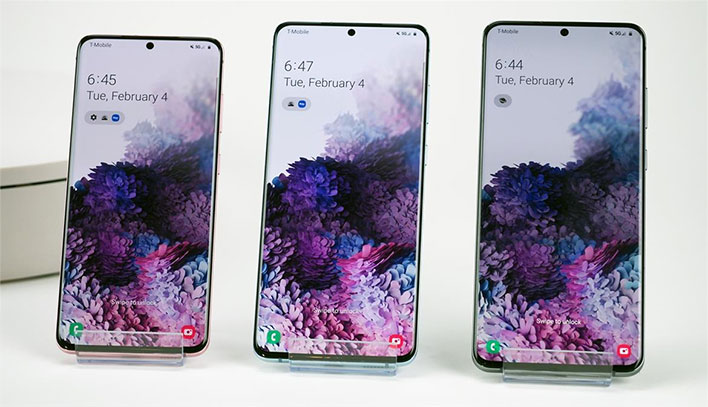Samsung's Galaxy S20 Will Force 60Hz Refresh Rates In These Situations

One of the key selling points of Samsung's recently announced Galaxy S20 family is the 120Hz refresh rate display. It's found on all three models, including the Galaxy S20 Ultra, Galaxy S20+, and the regular Galaxy S20. Interestingly, the high refresh rate is not enabled by default, and there are certain situations that will force a 60Hz refresh rate, even with 120Hz is selected.
All three phones use the same type of display, the only difference being the physical size (and how that impacts the pixels per inch count). Here's a quick breakdown...
- Samsung Galaxy S20 Ultra: 6.9-inch Infinity-O, 3200x1440, 511ppi, HDR10+, up to 120Hz
- Samsung Galaxy S20+: 6.7-inch Infinity-O, 3200x1440, 525ppi, HDR10+, up to 120Hz
- Samsung Galaxy S20: 6.2-inch Infinity-O, 3200x1440, 563ppi, HDR10+, up to 120Hz
In our experience, Samsung's mobile displays have typically been top notch, a notion that is often backed by DisplayMate's testing. Whether or not that holds true again for the Galaxy S20 series, we'll reserve judgement until we've had a chance to properly evaluate the phones and post a proper review.
As it pertains to the 120Hz refresh rate, the reason it's disabled by default is because Samsung has chosen not to support the higher setting at each phone's native Quad HD+ resolution. Out of the box, each Galaxy S20 runs at 60Hz. The 120Hz option is only available at Full HD+, a decision presumably made to maximize battery life.
Here's the thing, though—even when dropping down to Full HD+, the 120Hz setting may not always stick. According to SamMobile, there are specific situations where each Galaxy S20 handset will automatically cut the refresh rate in half. Those situations include when the battery temperature rises above 42C and/or when the battery level drops to below 5 percent.
In addition to those triggers, the site claims launching certain apps can force a 60Hz refresh rate. The built-in camera and Google Maps are two examples.
To the company's credit, the 120Hz setting is at least an option on all three phones, as opposed to making it an exclusive feature for the pricier Galaxy S20 Ultra. Still, it's kind of a bummer that users are not trusted to choose trade off battery life for a higher refresh rate if that's what they desire. Perhaps this will change in a future software update, but for the time being, there are limits to being able to run at 120Hz on the Galaxy S20 series.

